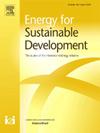Indian power sector decarbonization: Net-zero by 2050 or 2070
IF 4.4
2区 工程技术
Q2 ENERGY & FUELS
引用次数: 0
Abstract
The deep decarbonization of India's power sector, responsible for 40 % of national greenhouse gas emissions, is essential for meeting economy-wide net-zero targets. Understanding the current energy landscape requires assessing past achievements, leveraging resources, embracing technological advancements, and implementing effective policies. A thorough analysis is vital to identify gaps in achieving our Nationally Determined Contributions, ultimately facilitating net-zero goals. The urgency to mitigate emissions, heightened by climate-induced events and the need for renewable energy integration, calls for a reconsideration of net-zero timelines. Delayed action poses significant risks to ecosystems and economies globally. This paper explores how different pathways to net-zero emissions for power sector by 2050 & 2070 target years impact the future electricity mix, costs, generation profiles, and emission trajectories. We employ the energyRt optimization model, a bottom-up framework capturing regional, seasonal, and diurnal variations of renewable energy sources for thirty years, from 2020 to 2050. Preliminary analysis suggests current renewable resource estimations might not be sufficient for a 2050 net-zero goal. To meet the projected 6273 TWh demand by 2050, installed capacity would range from 2042 GW to 3100 GW. The base case emission trajectory reaches 2.4 GtCO2/year in 2050 with a grid emission factor of 0.369 tCO2/MWh. Achieving net-zero emissions by 2070 with CCS requires 33.37 % less investment than without CCS. The findings emerging from this analysis provide valuable insights into the power sector decarbonization pathways available to India in its pursuit of net-zero emissions.
求助全文
约1分钟内获得全文
求助全文
来源期刊

Energy for Sustainable Development
ENERGY & FUELS-ENERGY & FUELS
CiteScore
8.10
自引率
9.10%
发文量
187
审稿时长
6-12 weeks
期刊介绍:
Published on behalf of the International Energy Initiative, Energy for Sustainable Development is the journal for decision makers, managers, consultants, policy makers, planners and researchers in both government and non-government organizations. It publishes original research and reviews about energy in developing countries, sustainable development, energy resources, technologies, policies and interactions.
 求助内容:
求助内容: 应助结果提醒方式:
应助结果提醒方式:


